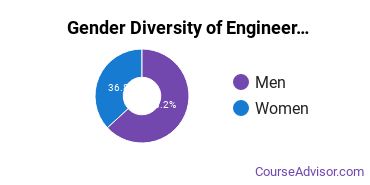Engineering at Butler Community College
Butler CC is located in El Dorado, Kansas and has a total student population of 7,175.
Want to know more about the career opportunities in this field? Check out the Careers in Engineering section at the bottom of this page.
Butler CC Engineering Degrees Available
- Associate’s Degree in Engineering
Butler CC Engineering Rankings
Engineering Student Demographics at Butler CC
Take a look at the following statistics related to the make-up of the engineering majors at Butler Community College.
Butler CC Engineering Associate’s Program

The following table and chart show the race/ethnicity for students who recently graduated from Butler Community College with a associate's in engineering.

| Race/Ethnicity | Number of Students |
|---|---|
| Asian | 3 |
| Black or African American | 1 |
| Hispanic or Latino | 1 |
| White | 10 |
| International Students | 3 |
| Other Races/Ethnicities | 2 |
Concentrations Within Engineering
If you plan to be a engineering major, you may want to focus your studies on one of the following concentrations. The table shows all degrees awarded in this field awarded for all degree levels at Butler Community College. A concentration may not be available for your level.
| Concentration | Annual Degrees Awarded |
|---|---|
| General Engineering | 19 |
Related Majors
- Physical Sciences
- Biological & Biomedical Sciences
- Engineering Technologies
- Agriculture & Agriculture Operations
Careers That Engineering Grads May Go Into
A degree in engineering can lead to the following careers. Since job numbers and average salaries can vary by geographic location, we have only included the numbers for KS, the home state for Butler Community College.
| Occupation | Jobs in KS | Average Salary in KS |
|---|---|---|
| Software Applications Developers | 5,570 | $85,380 |
| Industrial Engineers | 2,920 | $79,580 |
| Mechanical Engineers | 2,710 | $82,210 |
| Civil Engineers | 2,340 | $82,340 |
| Aerospace Engineers | 2,220 | $105,540 |
References
*The racial-ethnic minorities count is calculated by taking the total number of students and subtracting white students, international students, and students whose race/ethnicity was unknown. This number is then divided by the total number of students at the school to obtain the racial-ethnic minorities percentage.
More about our data sources and methodologies.
